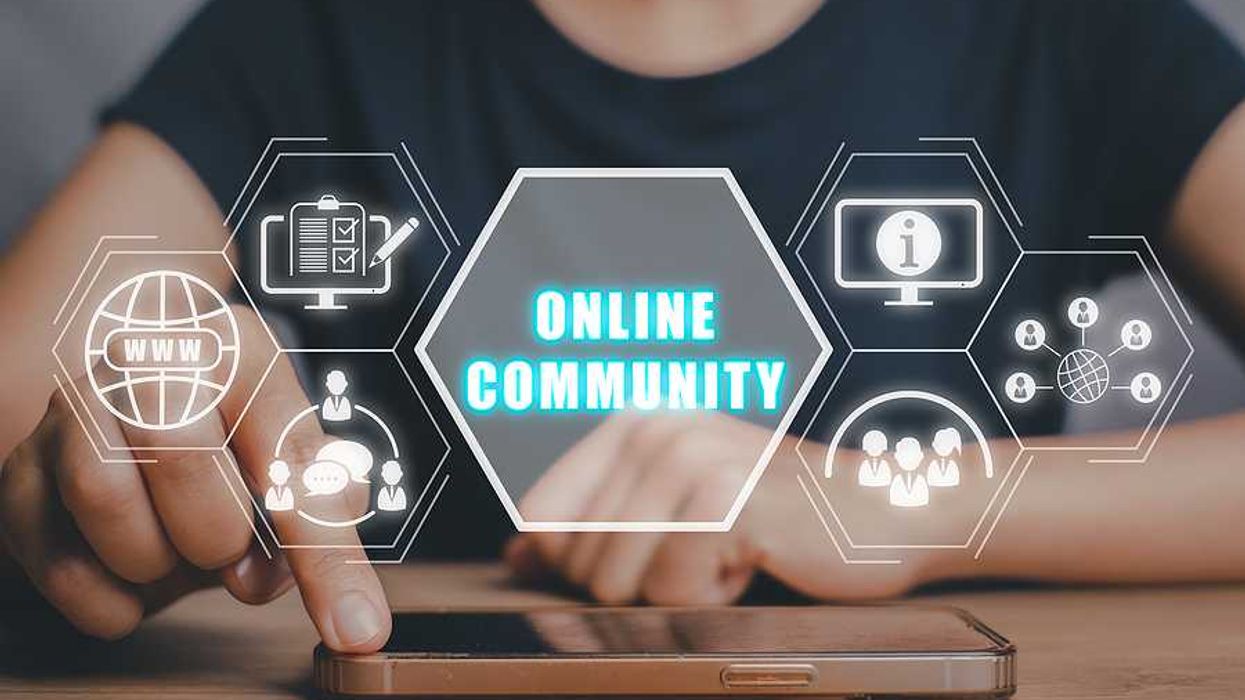
A software company is an organization that specializes in creating solutions that solve everyday challenges. Some software companies focus on consumer needs, such as creating a mobile app to enable remote banking, like depositing a check from home on your mobile device. Other software companies focus on creating critical business efficiencies, such as streamlining the flow of data and communications between medical professionals, clinicians, doctors, and other staff to ensure they have up-to-the-minute patient details in order to provide the best health care possible.
Both examples have one thing in common: they specialize in creating solutions that solve a customer need or significant pain point. To be successful, the software product must continue to deliver enough customer value, so users and businesses are willing to continue using it or paying for it.
As a company matures, product adoption increases, and new challenges arise. Sometimes the typical growing pains divert focus off creating customer value, which can erode customer loyalty. Unfortunately, most individuals don't understand the impact their current decisions have on their long-term sustainability. Are you unknowingly harming the future success of your software organization?
If software was easy, everyone would do it. There are many things that must be done right to achieve success, but nothing is more important than making sure you meet your customers' most pressing needs.
Happy customers make loyal customers, and when their happiness leads to referrals, your consumer basically loves your product so much that they voluntarily join your marketing team to convince others of your value. Ultimately, customer loyalty generates more revenue and more revenue creates sustainable growth.
If you continually make choices that put your customers' needs on the backburner, you are knowingly or unknowingly putting too much emphasis on today and sacrificing your future success and sustainability.
Just because the road to success is challenging doesn't mean you should give up and walk away. Have faith. Anything worth doing is worth doing right. Loyalty requires daily care and feeding. So, SECURE your future success with a plan that creates and maintains focus on customer value and customer loyalty.
Before we talk about how to SECURE your future success, let's take a look at a few of the basic requirements necessary to operate a software company.
Running a successful software organization can feel like a juggling act spinning out of control. No problem, right? You just need to be successful at the following and then some:
- Find an underserved market you are passionate about
- Create a solution that resonates with your audience and delivers value customers are willing to pay for
- Build a technical foundation that supports the future, at the right price to remain competitive
- Hire engineers that write quality, clean, reusable code
- Adopt lean and agile methodologies to deliver meaningful changes to your market quickly, with top quality, at a low cost
- Make your software so easy to use, it requires no documentation
- Create simple, easy to use, elegant user experiences
- Hire talented product managers (conductors) to lead the software orchestra, unifying the musicians together in such a way that they share a meaningful emotion with the audience
- Stay relevant, create loyalty, and promote additional purchases
- Capture qualitative and quantitative engagement metrics to understand product usage
- Adhere to compliance and regulations to protect end-user data
- Get along with everyone, internally and externally
- Don't build up mountains of technical debt
- Know when, where, and how much to invest and know when to STOP investing
- Oh, and you need to generate revenue and sustainable growth
With such a large list of responsibilities, you can understand how one or two things could slip through the cracks and suddenly you find yourself lost in the weeds, completely distracted from your most important job: attending to customer needs.
Unfortunately, if any of these fundamental requirements go unnoticed for a prolonged period of time, the oversight can impact your future in a very damaging way. It may be time to slow down, reflect on things you can do now to pave the way to a SECURE future.
Take a moment to get yourself back on track with the right mindset focused on customer value and customer loyalty.
Start Off On The Right Foot

Bigstock
Start off on the right foot. Define your company aspirations, the market you will serve, how you can win, and what makes your product "the best." Define everything that must be in place (systems, features, non-functional attributes) to achieve success. Make a commitment to remain customer obsessed. Share this vision with your tribe so it becomes a religion.
I recommend reading this WSJ bestselling book on strategy, "Playing to Win" by A.G. Lafley and Roger L. Martin (Harvard Business Review Press). While strategy isn't complex, it can be very hard, and this book helps organizations and people make hard choices about their future in order to win. To find out more about Playing to win, visit here Playing To Win Strategy.
Ensure Your Product Management Team Is Structured For Success

Bigstock
Ensure your product management team is structured for success. A professional product management organization should have a training curriculum, and implement and iterate product, people, and process best practices. A healthy culture will encourage a growth mindset, embrace continual improvement, and foster a culture where failure is a chance to become great.
According to a Product Management Skills Benchmark Report conducted by the 280 Group, on average product managers who work for an organization with a formal product management process possess a 26% higher skill set. The same study shows that product managers with a formal training process have on average 11% more skills, with some as high as 17% compared to organizations without a formal training process. Visit here, Product Management Skills – Benchmark Report to compare your skills to other product managers worldwide.
By investing in your people, you build a stronger team which is the fuel needed to drive future success.
Continually Assess Whether You Are Producing A Quality Product

Bigstock
Continually assess whether you are producing a quality product. Poor quality will destroy your reputation, lose trust within your organization and customer base, overburden your customer success team, and challenge your ability to close new business.
Fixing bugs, rolling back software, and re-writing code is extremely expensive and prevents you from investing in innovation and from creating solutions that delight customers. It's no different than a builder coming back repeatedly to fix a poor-quality home improvement job. If the job was done right the first time, the builder could focus his time on new value generating projects.
Lost time is lost money, and the additional material costs required to fix quality issues make the situation even more profound. You need quality products and continued innovation to create and sustain customer satisfaction.
So, don't install windows that leak, or proclaim a kitchen without a sink is a completed project. Your customer deserves better and delivering high quality solutions will make more funds available for your innovation budget to help secure a profitable future. Check out my LinkedIn article "We need to be more like Arnie", a tale about how customer value and quality leads to loyalty.
Understand How Implementing Metrics Across The Entire Product Lifecycle Can Become Your Guiding Light

Bigstock
Understand how implementing metrics across the entire Product Lifecycle can become your guiding light. Implementation of a North Star Metric or OKRs (objectives and key results) help remind your organization about the market problems your product solves and the revenue your organization plans to generate from your solution.
When an organization has cross-functional goal alignment and utilizes metrics to hold everyone accountable, they now have a barometer to gauge success. Most importantly, by continually checking your progress related to quality, investment choices, user engagement, and revenue, you can detect flaws in your hypothesis, and make the necessary course corrections. A revised plan helps redirect your efforts so you can deliver value to your consumer, increase loyalty and sustainable growth.
Run Your Organization With The Grit And Grace To Know When To Stop Investing In Products That No Longer Serve Your Market And Your Bottom Line

Bigstock
Run your organization with the grit and grace to know when to stop investing in products that no longer serve your market and your bottom line. If you are emotionally attached to the products because they drove your past success, it will hamper your ability to recognize when it's time to "End of Life" or dramatically decrease the investment to optimize the business.
To remain relevant in the future, you must optimize your current core business, walk away from products, concepts, and processes that inhibit growth, and shift investments into ideas and products that will create sustainable growth.
More simply stated, "Create the Future, Forget the Past, and Manage the Present" as described in one of my favorite books on innovation, "The Three Box Solution", by Vijay Govindarajan (Harvard Business Review Press). To view the book, visit here The Three Box Solution
Embrace A Culture That Promotes Creating Customer Value Over Revenue Extraction

Bigstock
Embrace a culture that promotes creating customer value over revenue extraction. If you create products with a delightful user experience that satisfy the customers' biggest pain points, you are on the right track to building customer loyalty. Loyalty leads to additional purchases and recommendations, which creates revenue and sustainable growth.
There is tremendous pressure to extract as much out of the business as possible, but when that prevents you from delivering value to your customers, then you sacrifice long-term success for short-term revenue gains.
Customers have a choice and can terminate their relationship with you if they no longer receive value from your products and services. Why spend money acquiring customers to replenish those that fell out the bottom only to get you back to where you started? Worse yet, you lost the opportunity to invest in value-creating innovation, because those funds shifted to reacquisition efforts.
Invest wisely, create value and you won't waste time and money trying to plug the hole in the bottom of the boat.
Success doesn't come easy, but if you remain diligent about generating customer value, with a goal to generate customer loyalty, your investments will be directed to the things that drive revenue and growth.
Remember, you have a choice: invest today in your customer and their most critical needs, or spend money later cleaning up bad quality, mounds of technical debt, and reacquisition costs.
The choice is relatively simple. To further support your success, create and continually improve best practices around people, products, and processes. If you sponsor a culture that values input from wise-eyes and fresh-eyes, and use data as your guiding light, you will increase your odds of winning now and into the future.
Listen To The Podcast Episode...
Looking for a job? We can help! Join our career growth club today and get access to one-on-one career coaching, resume and cover letter reviews, online tutorials, and unlimited networking opportunities—all in your back pocket!
If you want FREE career advice in your inbox, subscribe to our newsletter The Daily Dose!
- The 7 Keys To Career Success - Work It Daily | Where Careers Go ... ›
- Drift's Company Culture Awards Hard Work And Ambition - Work It ... ›
- 4 Core Values That Every Organization Should Have - Work It Daily ... ›
- #1 Challenge Your Industry Is Facing Due To COVID-19 - Work It Daily | Where Careers Go To Grow ›
- Is Software Testing Really Important? - Work It Daily ›

 Bigstock
Bigstock Bigstock
Bigstock Bigstock
Bigstock


